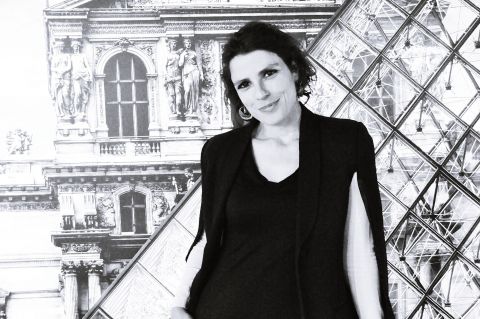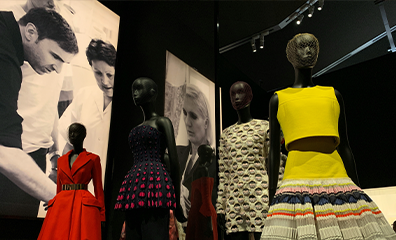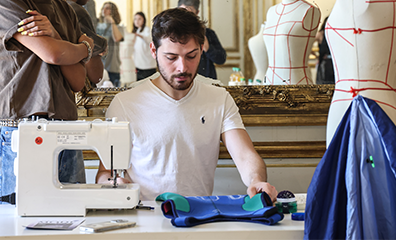Interview with Academic Director Albane Forestier on her Research about "Morality in Fashion"
Posted on 18/11/2018
Albane Forestier, Academic Director of IFA Paris, presented the results of her research last spring at a conference at the University of Lyon 2 on the theme "Morality in Fashion."
Could you sum up in few words what your article on "Morality in Fashion" presented at the University of Lyon 2 is about? What are the key points?
Albane Forestier: As a trained historian and 18th century specialist, I worked on a fashion phenomenon that was relatively unknown to the general public in the 18th century: the petty masters. These are young aristocrats who dress extravagantly and have effeminate manners. The moralists of the time laughed at them because they put too much blush on their cheeks - even if men still wear make-up in the 18th century -, wear too much jewelry or put on excessive perfume. My work aimed to evaluate the extent to which the adoption of signs belonging to the female cloakroom and the transgression of the masculinity codes of the time made these young people subversive characters. My research tends to show that if their coquetry constitutes a challenge to the warlike values that underpin the aristocracy to which they belong, and by extension represents a critique of the dominant social order, this challenge to their virility does not compromise their sexual identity as such. I was especially interested in the parallels that can be drawn between these groups of young people - there were also women, petty mistresses - and the more contemporary phenomena of counter-cultures or sub-cultures - mods, punks, goths, hippies... There are indeed parallels: these groups of young people develop their own language, different social places, an identity dress code and they transgress the existing community values. Moreover, it was the heirs of these petty masters, the Incredible, these extravagant dandies who came to the fore under the Executive board, who inspired John Galliano for his graduation collection from the Central Saint Martins in 1984.

Albane Forestier (Photo by Jase King)
How was this presentation done at Lyon 2? Is the publication of the conference - and therefore of your article - also scheduled?
Albane Forestier: The conference, organized by the Lyon 2 Fashion University and the Elico (Lyon information and communication research team) and Lahra (Rhône-Alpes historical research laboratory) research laboratories, brought together academics and professionals from around the world of fashion and communication, and called on many disciplines, including history, cultural studies, sociology, semiology and fashion studies. The presentation took place in the framework of a panel discussion on the theme "Gender & Clothing." The organizers have planned to follow up this conference with a publication of the proceedings of the conference.
Has this question of "morality in fashion" interested you for a long time? And if so, why?
Albane Forestier: What interests me most is the feeling that can exist between putting on clothes for oneself - to assert one's personality and individuality - and wearing them for others, because clothing necessarily entails the scrutiny of others. In any social group, clothing is a visual sign to mark an identity. So we have groups like the petty masters, or counter-cultures, who will distinguish themselves by their dress and use clothing as a marker of social opposition, and by extension of a form of immorality.
Can we say that the fashion industry is failing due to its "immorality" - often highlighted when it comes to its ecological impact - and if so, do you have an example to back it up?
Albane Forestier: The relationships between fashion and morality and the perception of fashion as immoral are present since from the very beginning of Western fashion. Indeed, clothing is used by Adam and Eve to protect themselves from nakedness, and is linked to original sin in the Judeo-Christian theological tradition. So the clothing must be as discreet as possible so as not to recall sin. At the moment, these questions are being brought up to date by the trend of modest fashion. Modest fashion is generally defined by religious codes that oppose the notions of unveiled-hidden, naked-covered, modest exhibitionist, individuality-membership to a community, but the growing success it encounters also refers, here again, to a desire to mark its identity through clothing. Clothing can also go against morals and customs when it is not worn according to a condition, a state, a class. For a long time, sumptuous laws governed the way people dressed, but even today clothing is still part of a social system. Some codes continue to be respected, such as the suit and tie in companies or in the government. In fact, by carving out the shape of the body and constraining it, clothing makes it possible to subject the body to the requirements of social norms.


